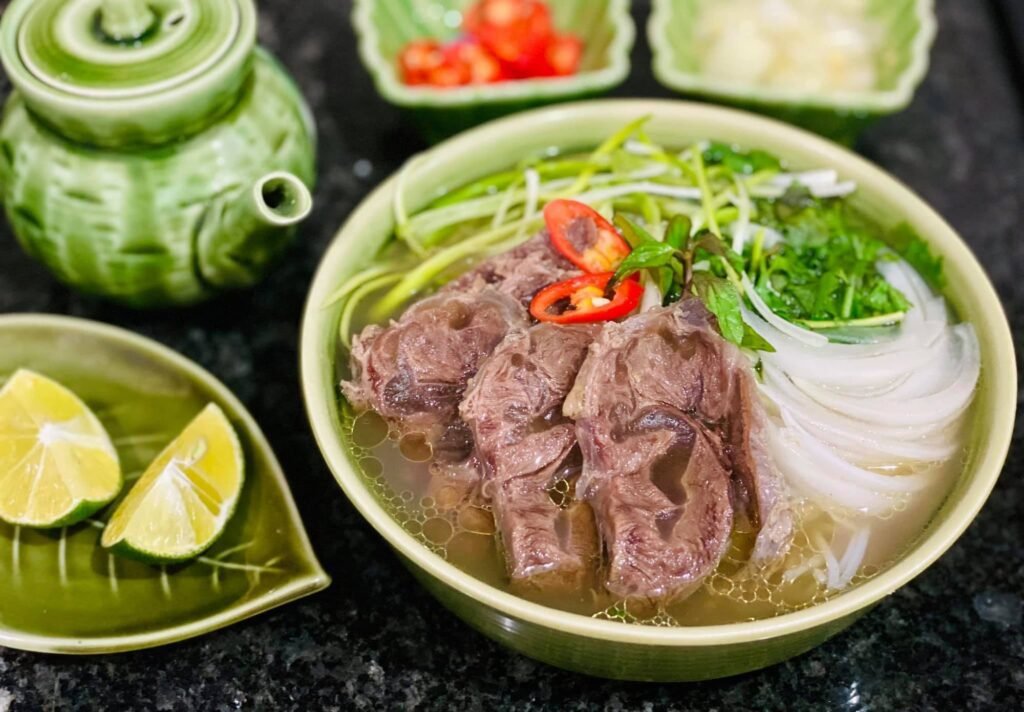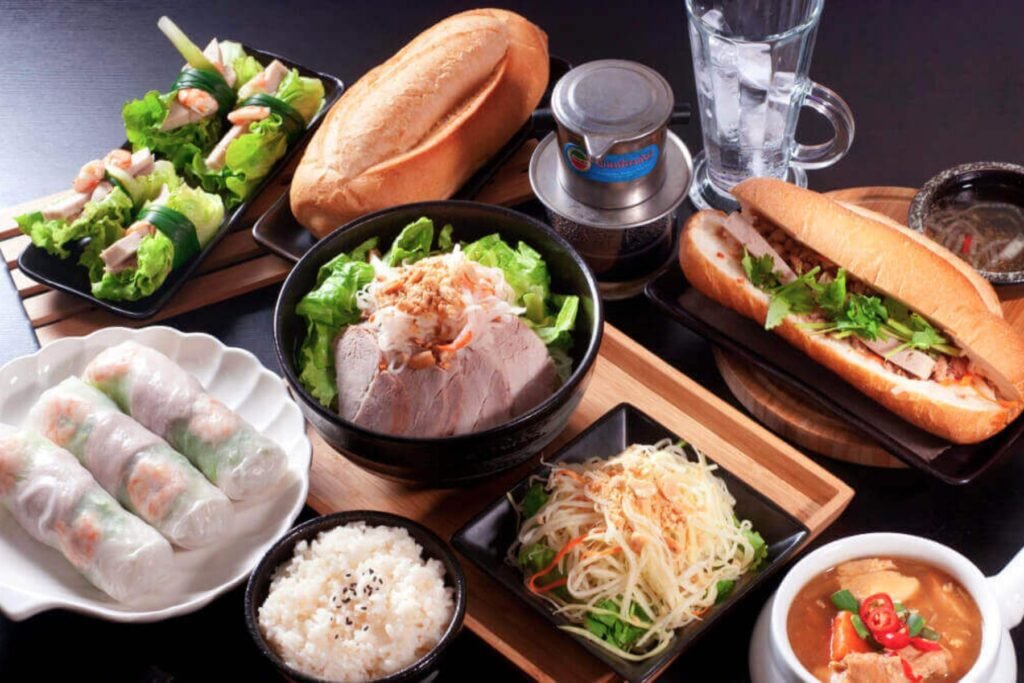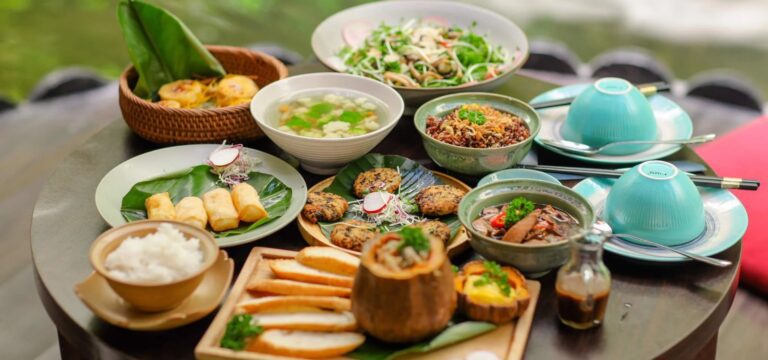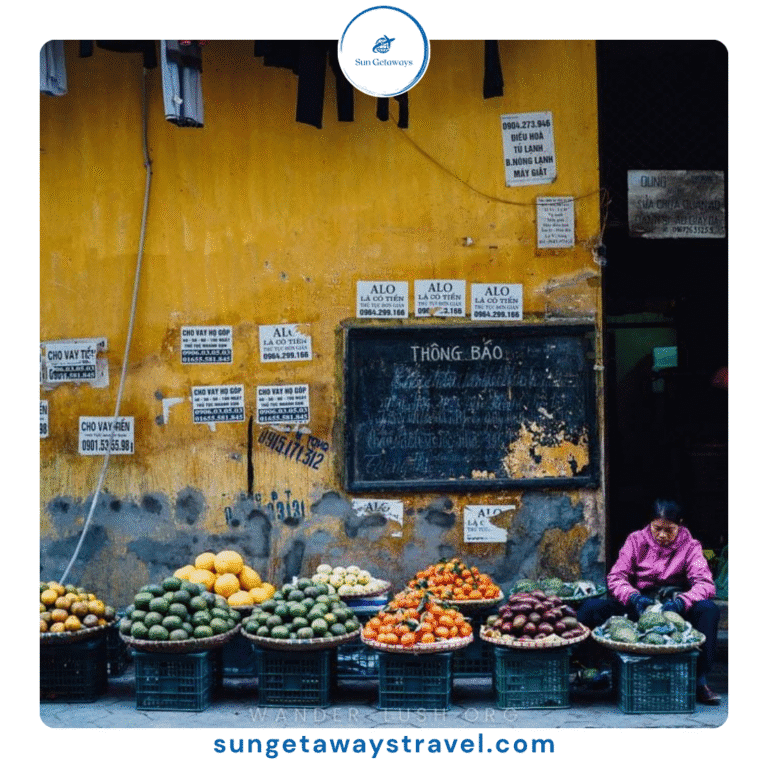Vietnamese Family Meals: Culinary Life of a Local Family
Step into a Vietnamese kitchen and you’ll find more than food—there’s love, tradition, and daily rituals steeped in flavor and meaning. Vietnamese family meals are a beautiful expression of everyday life in Vietnam, where food is not just for nourishment but for bonding. Let’s explore what a typical day of eating looks like in a local Vietnamese home.
A Day in the Life: Vietnamese Family Meals from Morning to Night
A Vietnamese family’s culinary day is structured yet flexible, guided by freshness, local ingredients, and centuries-old habits. Meals are a time to gather, catch up, and enjoy dishes crafted with care. Here’s how a normal day plays out, starting with breakfast.
Breakfast Beyond Pho: The Start of the Day
When people think of Vietnamese breakfast, pho or banh mi often comes to mind—but there’s so much more on the table. In Vietnamese households, breakfast depends on location, lifestyle, and what’s available at the market. Rural and urban areas have unique breakfast routines, yet all are rooted in warmth and practicality.


Common breakfast dishes in Vietnamese family meals include:
- Sticky rice (xôi) topped with mung bean, pork floss, or fried shallots
- Bún riêu – crab noodle soup with tomatoes and tofu
- Bánh cuốn – steamed rice rolls with wood-ear mushrooms and minced pork
- Fried rice with eggs – quick and filling
- Leftover rice soup – usually made from last night’s rice with simple broth
Urban families may grab something to go, but in the countryside, breakfast is often home-cooked and shared. It sets the tone for a connected and balanced day.
👉 Explore: Vietnamese Table Manners: Traditions, Etiquette & Sharing
Lunchtime and Dinner: More Than Just Eating
In Vietnam, lunch and dinner are more than meals—they’re social rituals. These are the times when family members pause from work or school to reconnect and share stories.


A typical Vietnamese home cooking routine includes:
- Going to the market early in the morning
- Preparing dishes fresh each mealtime
- Eating together, often on the floor or at a low table
- Everyone contributes—cooking, washing, serving
Unlike Western meals that may have one main dish, Vietnamese family meals feature multiple small Vietnamese dishes designed for sharing.
👉 Explore: 12 Days Vietnam Local Food Tour & the best food in Vietnam
Essential Elements of a Vietnamese Family Meal
Each meal is carefully balanced to deliver flavor, nutrition, and satisfaction. No single dish dominates. Instead, you’ll find a harmony of salty, sour, sweet, and umami in every bite.
1. Daily Vietnamese Food Staples
Vietnamese families typically include these staples in lunch and dinner:
- A savory dish: often braised pork, fried fish, or stir-fried beef
- A boiled or stir-fried vegetable: like morning glory, mustard greens, or spinach
- A soup or broth: canh chua (sour soup), pumpkin soup, or pork bone broth
- A dipping sauce: always fish sauce with garlic, chili, lime
- Rice: always a full pot of hot, fluffy jasmine rice
This balance of protein, vegetables, and carbs is what defines daily Vietnamese food. It’s simple but deeply flavorful.
🦐Discover the mouthwatering Hoi An street food! Savor authentic local dishes
2. Seasonal and Regional Homecooked Dishes
Regional diversity adds charm to Vietnamese family meals. Each part of Vietnam brings its unique touch to daily menus. While northern families might enjoy salty and pickled sides, southern dishes are sweeter and richer.


Here’s a taste of regional homemade food:
- Northern Vietnam: pickled eggplant (cà pháo), fermented vegetables, pork with salted shrimp paste
- Central Vietnam: spicy fish stew, small anchovies, and strong herbal soups
- Southern Vietnam: caramelized fish (cá kho tộ), sweet-sour tamarind soup (canh chua), and coconut-based stews
Explore: Unveiling Vietnamese Culture: Traditions, Etiquette & Festivals for Travelers
The Art of Cooking and Seasoning at Home
1. Flavor Comes First: Seasoning in Vietnamese Home Kitchens
Ask any Vietnamese home cook, and they’ll tell you—how you season a dish makes all the difference. The kitchen is filled with aromas of garlic, fish sauce, shallots, and ginger. Balance is key: sweet, salty, sour, and spicy flavors must complement each other, not compete.


Popular ingredients in Vietnamese home cooking routine include:
- Fish sauce – the heart of Vietnamese flavor
- Sugar – often caramelized for color and taste
- Salt & MSG – used sparingly but with precision
- Aromatics – lemongrass, lime leaves, spring onions, fresh herbs
- Chili – crushed fresh or made into a dipping paste
Each cook has their unique “hand taste” (gu nêm nếm) that turns a simple dish into a family favorite.
2. Daily Market Visits: Freshness Above All
In Vietnam, freshness is everything. That’s why most households shop for groceries daily, especially for vegetables, meat, and fish. Wet markets are the heart of any neighborhood, offering seasonal produce and daily inspiration for meals.
A typical morning in the market might include:
- Choosing live fish or fresh pork
- Picking out herbs like coriander, basil, or perilla
- Bargaining with familiar vendors
- Planning dishes based on what’s freshest
This daily market habit is part of what keeps daily Vietnamese food so vibrant and dynamic.
Explore: Hanoi 3 hours Street Food Tour
The Culture Behind the Meal
The Importance of “Cơm Nhà” – Home Meals
In Vietnam, “cơm nhà” (home-cooked rice meals) is a phrase filled with emotional weight. It represents comfort, routine, and family. Even busy urbanites will try to return home for dinner or bring food from home to feel connected.


Meals are eaten together, often with laughter and conversation. In rural areas, entire extended families may gather for dinner. It’s not just about eating—it’s about being together.
This tradition helps explain what Vietnamese eat daily—not just for sustenance, but for a shared moment in time.
Mealtime Etiquette and Traditions
While Vietnamese meals are casual, they have unwritten rules:
- Elders eat first
- Rice is the foundation; side dishes are shared
- No phones at the table
- Thank the cook after eating
- Never waste food
Visitors lucky enough to share Vietnamese family meals will notice how everyone serves each other and how much attention is paid to mutual respect and harmony.
👉 Explore: 12 Days Vietnam Local Food Tour
For Curious Travelers: Sharing a Family Meal in Vietnam
How to Make the Most of This Cultural Experience
If you’re invited to dine with a Vietnamese family—say yes. It’s one of the richest cultural experiences you can have. You’ll learn not just what Vietnamese eat daily, but how they live, care, and connect.


Tips for guests:
- Bring a small gift (fruit, snacks, or souvenirs)
- Try everything—even the fish sauce
- Compliment the food
- Be open-minded about textures and flavors
- Enjoy the meal slowly and socially
Even if you don’t speak the language, food is a universal way to communicate care.
FAQs about Vietnamese Family Meals
1. What are typical dishes in Vietnamese family meals?
Meals usually include rice, a salty meat or fish dish, boiled or stir-fried vegetables, soup, and dipping sauces.
2. How often do Vietnamese people cook at home?
Most families cook twice a day—lunch and dinner—and often shop daily for ingredients.
3. What’s the difference between daily Vietnamese food and restaurant food?
Home meals focus on balance and simplicity, while restaurant dishes are more elaborate and flavor-intense.
4. Is it rude to refuse food during a family meal?
Refusing food may seem impolite. It’s best to try a little of everything and politely decline seconds if you’re full.
5. How can I experience a Vietnamese home meal as a tourist?
Look for homestays, food tours, or Airbnb Experiences that include a local cooking class or family meal.
Conclusion: Why Vietnamese Family Meals Matter
Vietnamese family meals are far more than food—they’re the glue that binds generations, the warmth that makes a house a home, and the everyday joy of living together. From sticky rice in the morning to savory soups at night, every dish tells a story.
They reflect not just Vietnam’s culinary creativity, but its deep values of family, respect, and togetherness. If you ever get the chance to sit down at a Vietnamese family table, don’t miss it—it’s an unforgettable journey into the soul of the country.
Our all-inclusive trips cover every detail, from accommodations and transportation to unforgettable experiences, depending on your interests (Our Customized Private Tour for each customer to Vietnam 🇻🇳). Ready to embark on your next adventure?
Ask a question
Leave a Comment (0)
No questions yet. Be the first to ask a question!





















